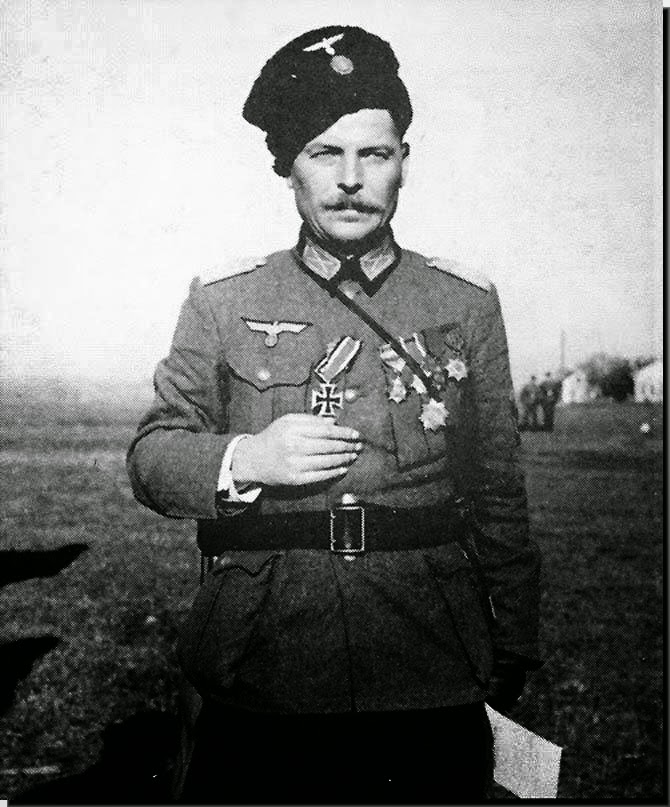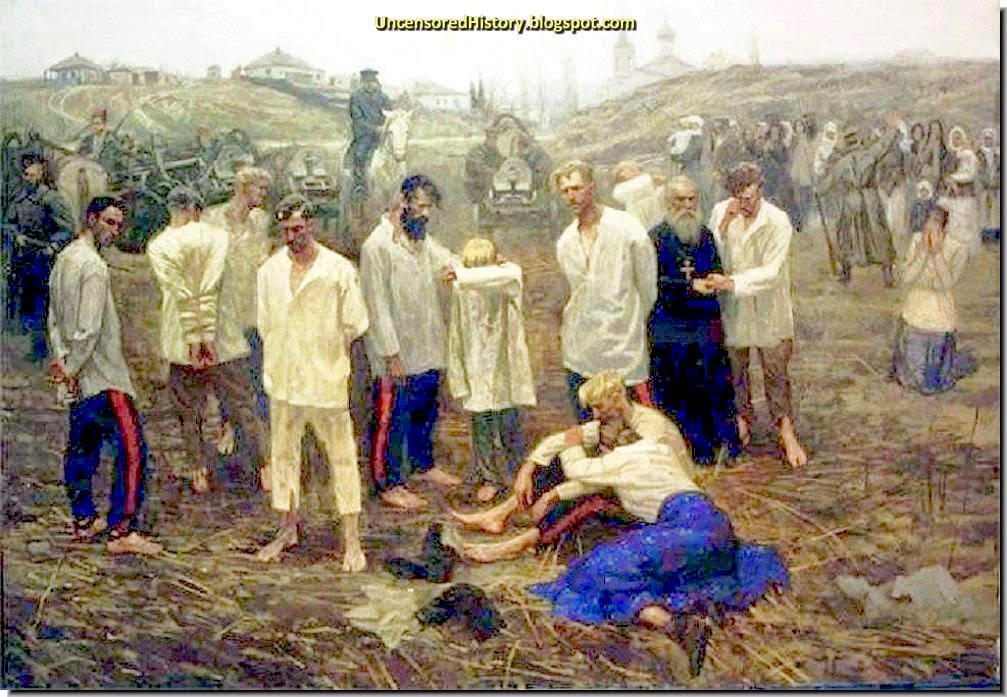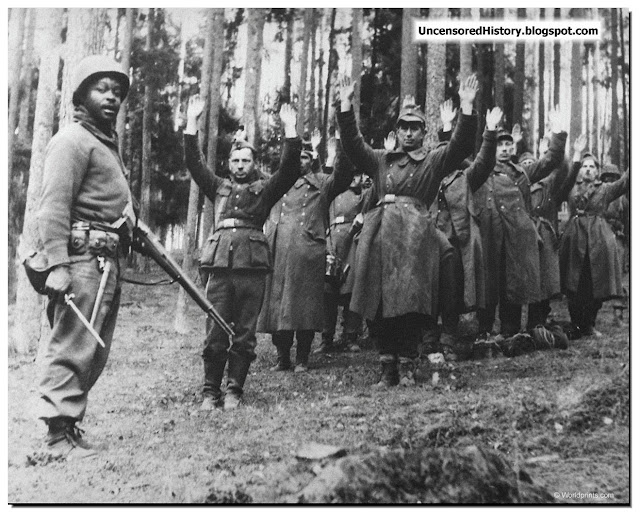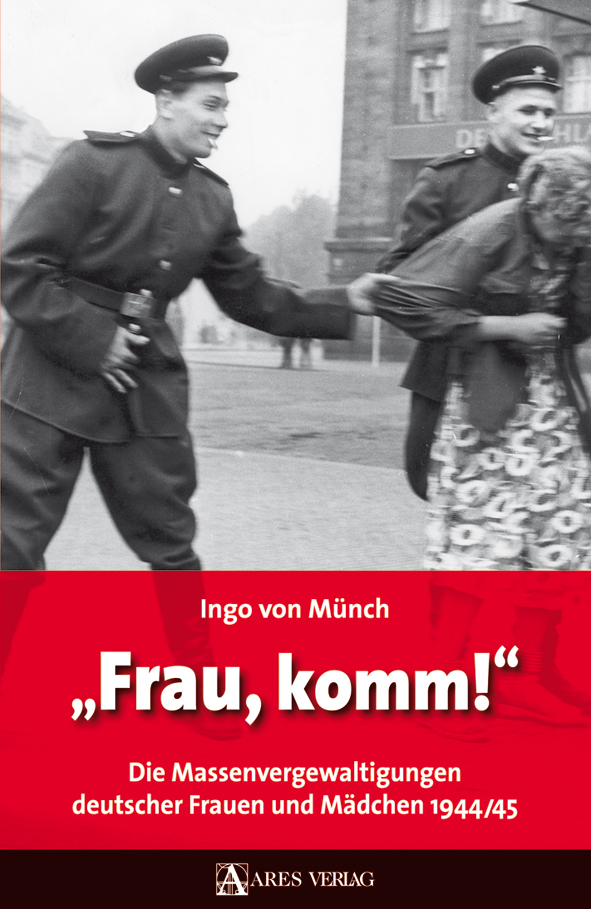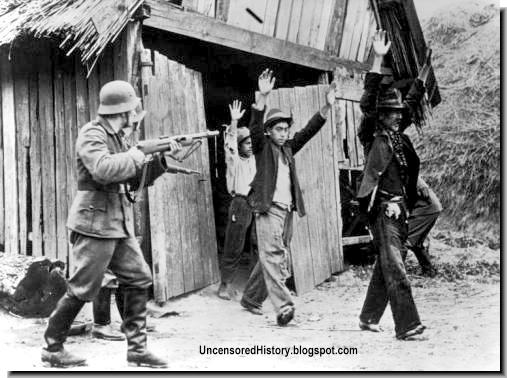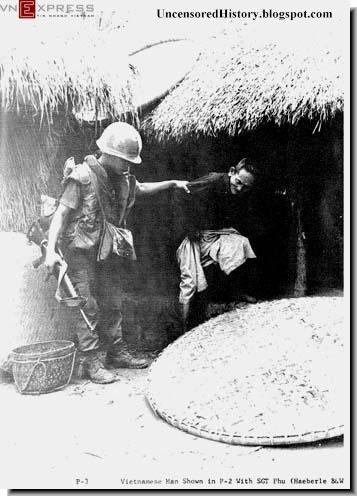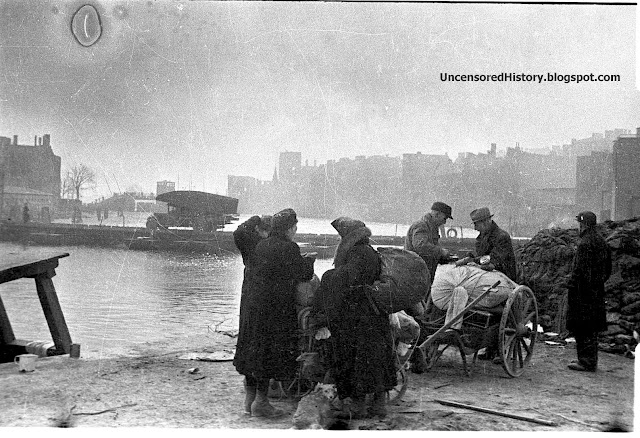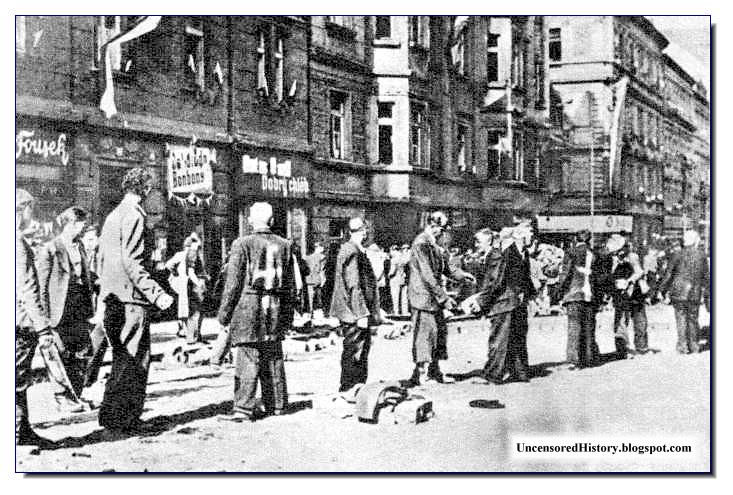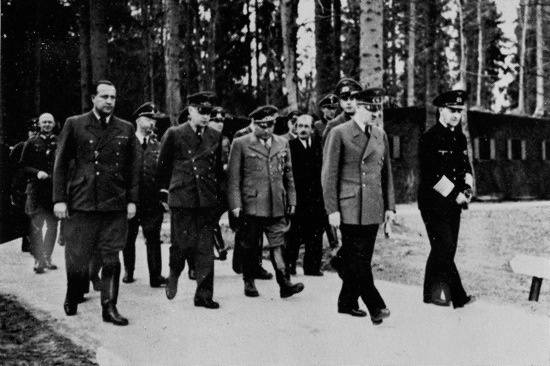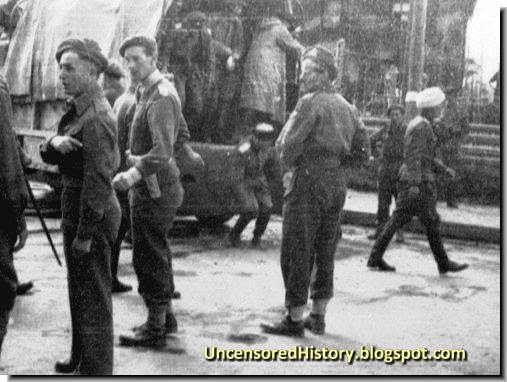 |
| British soldiers handing over the Cossacks to the Russians |
This is something that Britain would like buried in the ground. It is said that there were no good guys in the Second World War. The forced return of Cossacks to the Red Army by the British in 1945 only proves the point.
A bit of background. The Cossacks have always been fiercely independent. They had fought the Bolsheviks with the Whites in 1919. Many had emigrated to other countries. In 1941 when the Germans invaded Russia the Cossacks found a way to fight the Stalinist regime. They fought in the Wehrmacht against the Red Army.
As the war was ending, the Cossacks found themselves cornered in Austria, in areas controlled by the British. They thought they would be safe. But their fate had been sealed at the Yalta conference.
What followed was something that the British would hardly be proud about. All the captured Cossacks were handed over to the Red Army. Women and children included. Knowing full well the sad fate that awaited the Cossacks.
In the Bond film "Golden Eye" Bond says about this bit of history, "Not exactly our finest hour".
Equally reprehensible for the Allies was the handing over of those Russians who were anti-communists, anti-Stalin and had fought the Red Army with the Germans.
Yalta made the Allied democracies do things that has left an indelible blot on their history.
The Cossacks didn’t go willingly. British troops had to beat them into submission with billy clubs and rifle-butts. Eventually, almost 35,000 Cossacks were transported to their ‘mother country’ where the Soviets ‘welcomed’ them.
The vast majority of them were sent immediately to labor camps in Siberia, which were little better than the death camps the Nazis had built. Almost all of the Lienz Cossacks ‘repatriated’ back to Russia died in brutal suffering.
The ‘lucky’ ones didn’t even make it that far. Because many of the Cossacks weren’t born in Russia (their parents had left following the Russian Revolution) they were unable to be tried for treason as Soviet Citizens. Therefore the Red Army saved themselves the hassle of a military trial and executed them on the spot, with a bullet through the brains.
http://goo.gl/uzjtf7
 |
| Betrayal of Cossacks at Lienz A painting by Korolkoff |
For many years this unique piece of film was not available for public inspection. What it recorded was a small part of a vast operation that was one of the most sensitive of the Second World War, the handing over to Stalin of large numbers of Russians who in varying circumstances found themselves under German control by the war's end. Some of these Russians had been organized into military units to fight alongside German forces against the Red Army; in addition to them were well-known Cossack regiments who had left their homeland in the period 1917 - 1921 after the defeat of the White Russian armies by the Bolsheviks. In all, several hundred thousand Russians - a staggering number - took up arms against the Soviet Union in the years following the German invasion in June 1941.
Cossack General Ivan Kononov: Kononov was captured and released in 1946 by the British from a DP Camp in Klagenfurth, and later moved to Munich.
After failing to establish a political organization with the various foreign associations, he feared extradition to the Soviet Union. In 1948, he travelled to Adelaide, Australia, where he settled and became a target of KGB surveillance.
Kononov was the only general who had defected to survive the war and evade subsequent Soviet persecution against all so-called traitors of the Motherland.
The fate of these Russians was one of the best kept secrets of the war. As many as could surrendered to American and British forces, trusting that they would eventually be able to settle somewhere outside the Soviet Union. But in February 1945, at the Yalta conference, Roosevelt and Churchill agreed to Stalin's demand that they be handed over to him. The anti-Soviet Russians in the hands of the western allies would therefore be betrayed. To carry out the repatriation order, American and British servicemen often had to resort to deception and brute force. No one doubted what was in store for the Russians once they were in Soviet hands.
Of all this, the public in the democracies knew nothing. For three decades the subject remained a closely guarded secret. Western eyewitnesses were obliged by official policy to keep silent. A few journalists knew that some handing over was taking place, but not its scale. But Alexander Solzhenitsyn had met some of the surviving Russians in Soviet prison camps and learned about their history. His account of their fate and that of their leader, General Vlasov, which appeared in the first volume of The Gulag Archipelago, published in 1973 - itself a sensation - was the first the general public in the west heard of the subject and the phenomenon, as Solzhenitsyn put it, of so many young Russians joining in a war against their own Fatherland.
The Americans returned to Plattling visibly shamefaced. Before their departure from the rendezvous in the forest, many had seen rows of bodies already hanging from the branches of nearby trees. On their return, even the SS men in a neighbouring compound lined the wire fence and railed at them for their behaviour. The Americans were too ashamed to reply.
Painting showing Cossack officers being executed by the Red Army at Lienz in 1945
The cemetery at Judenburg of Cossacks massacred by the Red Army
IN CONTRAST, THE HONORABLE GERMAN SOLDIERS........
(14 October 1898 – 16 January 1947)
The Last Knight of Europe
